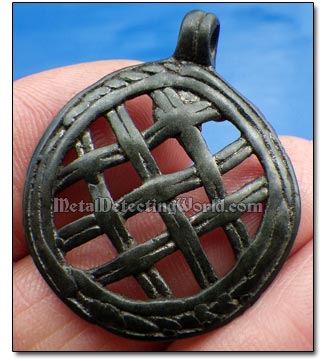My Search Programs for Minelab CTX 3030 and E-Trac Metal Detectors
Program #3 Settings for RELIC HUNTING in Fields: Expert and Preferences Menus, page 3
(...CONTINUED from Previous Page)
Expert Menu:
(see details on page 6 of my 3-Level Search Program description)

RECOVERY DEEP - ON (page 70 of the E-Trac Instruction Manual)
If the ground mineral content is HIGH, and the 'RECOVERY DEEP - ON' is implemented, the FE-CO read-outs of targets buried deep will be distorted, so instead of using 'RECOVERY DEEP - ON', your should set VOLUME GAIN to a higher level - from 25 to 28.
CTX 3030:
RECOVERY DEEP - ON (page 40 of the CTX-3030 Instruction Manual)
The RECOVERY DEEP should be OFF on the high-mineralized ground.
RECOVERY FAST - OFF (page 71 of the E-Trac Instruction Manual)
When the 'RECOVERY FAST is OFF', both accepted and rejected target signals will blend, and you will hear only one signal and see "contaminated" Target IDs. Whether to implement the 'RECOVERY FAST - ON' or not, your decision should be based on your detector's performance. When the 'RECOVERY FAST - ON' is employed, no filtering is involved, therefore, the detector's microprocessor works faster. But this is not necessary if the targets are sparse.
CTX 3030:
RECOVERY FAST - OFF (page 40 of the CTX-3030 Instruction Manual)
TRASH DENSITY - LOW (page 72 of the E-Trac Instruction Manual)
The TRASH DENSITY setting is not available in CTX-3030
If the ground is highly mineralized, the 'TRASH DENSITY - HIGH' along with 'GROUND-DIFFICULT' setting should be selected.
CTX 3030:
TARGET SEPARATION - LOW TRASH (in Target Separation Menu, page 41 of the CTX-3030 Instruction Manual) is employed IF the ground mineralization is LOW, and ENABLE GB is OFF.
If the ground mineralization is HIGH, either the HIGH TRASH or GROUND-COIN setting should be selected depended on which type of relics you search for: iron or non-ferrous.
When HIGH TRASH is used, the Target ID is less stable, therefore a larger edit frame will be required in order to accept or reject specific targets, but since least Discrimination is employed for these program settings, the larger edit frame size would not matter. HIGH TRASH can also be used with a slightly faster sweep speed, making it suitable for areas where fast ground coverage is important. In HIGHLY MINERALIZED ground conditions, the HIGH TRASH setting, on the contrary, offers improved target ID stability.
The GROUND-COIN setting uses advanced signal processing techniques to minimize the blending of ground and coin signals. This improvement in Target ID stability allows you to correctly identify the desirable targets. The Target Separation settings are the most important as they influence the FE-CO readings of targets, and, therefore, should be chosen carefully. Before conducting your search at the hunt site, it is the best to experiment with each Target Separation setting on real targets at the site, and see which setting is the most suitable for current metal detecting conditions.
GROUND - Neutral (page 74 of the E-Trac Instruction Manual)
The GROUND setting is not available in CTX-3030
This setting depends on soil conditions. See the procedure for determining the Ground setting on page 4 of my 3-Level Search Program description.
CTX-3030:
TARGET SEPARATION - LOW TRASH (in Target Separation Menu, page 41 of the CTX-3030 Instruction Manual) along with ENABLE GB - OFF.
If the ground mineralization is HIGH and the trash content is LOW, the GROUND-COIN (GC Target Separation) should be implemented in conjunction with GROUND BALANCE feature ENABLE GB - ON (pages 21-22 of the CTX-3030 Instruction Manual). The 'GROUND-COIN' setting provides better target identification as it minimizes the blending of ground and good target signals. The GROUND-COIN Target Separation greatly improves the stability of the good target's signal in highly mineralized ground.
NOTE: Out of four settings in Target Separation Menu (HIGH TRASH, LOW TRASH, FC Target Separation, GC Target Separation), only one setting at a time can be selected. A Target Separation Matrix (shown below and on page 41 of the CTX-3030 Instruction Manual) should be used as a guide in selecting an appropriate setting:
Target Separation Matrix

NOISE CANCEL - MANUAL - 3 (Manual Noise Cancel is described on page 75 of the E-Trac Instruction Manual)
You may want to select any particular channel that is the most appropriate for specific relic targets, either ferrous or non-ferrous, or both, i.e., with this channel, you get the most resonant audio signals from the desirable targets. A simple method of determining the optimum channel is described on page 7 of my description of the Level-3 Search Program "COINS".
Channel 3 is selected for my search program because the lower channels 2, 3 and 4 are attributed lower frequencies in comparison to frequencies of the higher channels. Lower operating frequencies are the most effective for detecting large ferrous and non-ferrous masses buried deep.
CTX 3030:
NOISE CANCEL - MANUAL - 3 (page 20 of the CTX-3030 Instruction Manual)